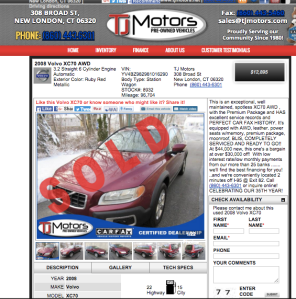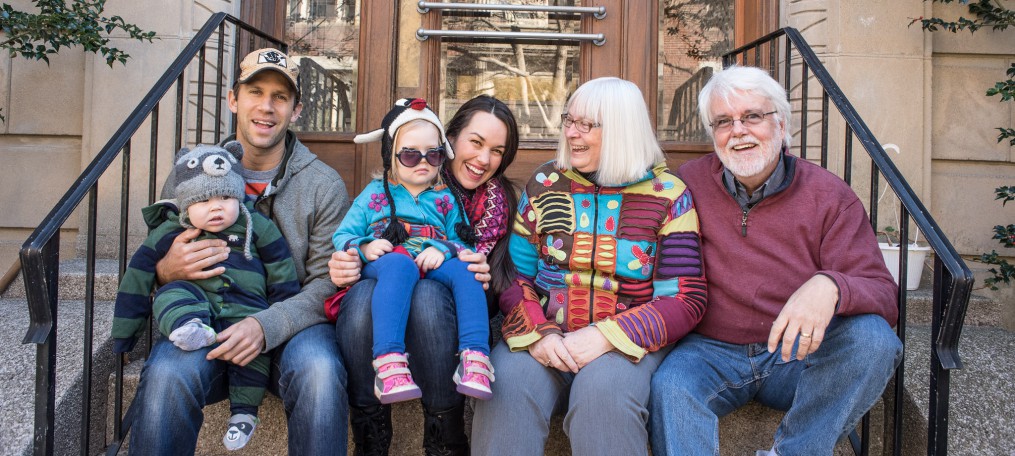It took us a while, but I woke up one morning early in the new year and knew it was time. Carol, who gets behind the wheel more frequently than I do, wasn’t so sure. Within a couple of days, consensus arrived and the car departed. For the first time in a half century, neither of us had wheels.

Our Volvo wagon ended up on a used car lot down the street from the high school I attended in New London. Ct.
Here’s how we decided — and what we’ve learned so far about life without a car.
Depending on your situation, there’s almost always — or almost never — a better way than driving to get from A to B. We count ourselves lucky to be in these circumstances: A cross-town bus at the end our street, a couple of trolley lines within several blocks, Zipcars parked down the street and Lyft and Uber at our relatively inexpensive beck and call.
If those alternatives didn’t represent enough in the way of incentives to going carless, consider the disincentives to car ownership: Our apartment building has no parking, and the city of Brookline bans parking on city streets between 2 a.m. and 6 a.m. Since moving here from Beacon Hill in August, we’d been paying $200 a month — more than we paid in rent for our first few apartments in the ’70s — to park our seven year-old Volvo wagon in the lot of a nearby office building.
And then there’s the environmental impact, even though we may be diminishing our carbon footprint even more significantly with our reduced consumption of beef. Baby steps in both cases, of course, but they feel like steps in the right direction.
At the risk of posing as a trend-setter, I’ll point to research by the University of Michigan’s Transportation Research Institute suggesting that America’s love affair with the automobile may have peaked. Even though fewer than ten percent of American households get by without a car, the percentage has been rising since 2008.
That chart of the top carless cities suggests only one reason beyond the obvious indicator of decent public transportation. That’s poverty, which is the only explanation for 26 percent of households without a car in a public transit desert like Detroit.

That’s our buried Volvo, dwarfing the two hikers making their way up Chestnut Street in front of the Beacon Hill Friends House last winter.
Boston is number three on the list, with about 37 percent of households getting by without a car. A map showing 794 U.S. cities with a population of 50,000 or more indicates that about 24 percent of the households in Brookline — our new home since August — have no car. And if you drill down even further to our zip code (the area shaded in purple in the accompanying map on this page) straddling Coolidge Corner on Beacon Street, you’ll get a sense of the walkability of our neighborhood. There’s easy access not only to public transit but to plenty of shopping and restaurants, perhaps too many for our own good.
As regular readers know, we’ve been thinking (and talking and writing) about getting rid of the car for some time.
Last year at this time, we were still digging out from a snowmageddon that buried the Volvo for nearly eight weeks. Once the snow melted (some time in July), we were back to the sort of excuses making separation difficult — occasional forays to the countryside for apple-picking or a visit, say, to Walden Pond. Yeah, we knew Zipcars are available for trips like that, but there’s something about the convenience of jumping in your own car that we were reluctant to relinquish.
It’d be nice to have a car this afternoon when we head over to Sportsmen’s for Leila’s third birthday party. Instead, we’ll pack some of the party paraphernalia — and maybe one of the kids — into a Zipcar we’ve booked for several hours. It’ll cost $48, but that still gives us quite a bit to spend this month from the $200 we’re not paying to park the Volvo.
In retrospect, going carless seems like such a no-brainer that we feel silly waiting as long as we did. Maybe emotion had something to do with it.
I remember how I felt owning my first car, a 1964 VW bug. I bought it at age 18 during what amounted to a gap year between high school and college. I was still living at home with my parents, but that car gave me the freedom to go anywhere at any time for any reason.
Funny, but the first word that comes to mind in reflecting on life without a car is also freedom. Nearly a half century after buying that first one, I’m feeling a freedom from as opposed to freedom to. I feel free from worry about the Volvo’s maintenance and expense, of course, but I get a bigger kick out of simply being free of one more thing complicating my life. I say this even in light of the not very exciting Blue Book price that Boston Volvo Village was willing to pay us for it.
Feeling a bit like an online stalker of an old girlfriend, I couldn’t help checking up on the Volvo, gone just two months now. Turns out that it made its way from Boston Volvo about 100 miles south to a used car lot in New London, Ct. The lot is down the street from the high school I graduated from in 1966 and not far from the site of our upcoming 50th reunion this summer. No chance of paying the Volvo one last visit when I’m in town, though. My latest online search for vin number YV4BZ982981016290 closed this chapter of our lives with a single word imposed across its still good looking grill: “Sold.”
What’s the state of your automotive relationship these days? Already split? Wavering? In it for the long haul?


I fear doing the math because I know I should sell one of my cars. My NV registered Acura is now in Florida; I cannot renew the registration without getting it smog tested –in NEVADA. My Florida registered Odyssey is now in Las Vegas. I do think that UBER and LYFT may help in the city but my cross country jaunts require owning a car, I think. I will give you the answer on August 12, Bil!
LikeLiked by 1 person
We steered clear of the math, too, Fran, mostly because we knew it led to a decision we weren’t ready to make. But every situation is different, and if you’re enjoying the Nevada-Florida drives, you probably want your own car to make them with.
LikeLike
The European solution: Bicycles?
LikeLike
Point well taken, Ernst. They figure in our plans, too, but not until it warms up a bit.
LikeLike
Some additional discussion attached to the Facebook post: https://www.facebook.com/bmitch/posts/10153308258396861.
LikeLike
Pingback: On the road to 1 divorce, 2 marriages, 3 bikes, 4 seats, 1,800 miles – Across The Hall